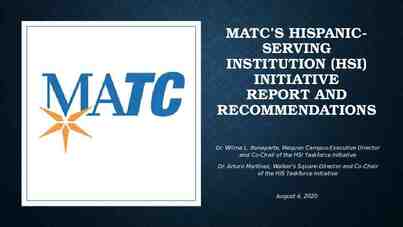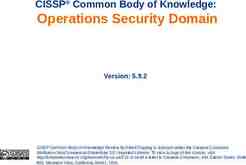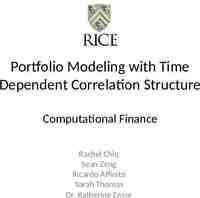Abuse of Dominant Position (Cases) – Carishma Singh
27 Slides72.36 KB

Abuse of Dominant Position (Cases) - Carishma Singh

Belaire Apartment Owners’ Association v. DLF Ltd. And HUDA The present case was an appeal against the first order of CCI (DLF Ltd. V Belaire owners’ association) Informant- Apartment owners’ association (formed by the allottes) Apartment: DLF city, phase V, Gurgaon OP1- DLF (a public limited company)

Informant’s main contentions: Unfair and unreasonable conditions imposed upon allotted owners in the buyer’s agreement. Non uniformity in brochure issued by OP1 and the agreement

s. 19(4) read with s.4 (2) CCI found a prima facie case established and hence caused an investigation to be made by the DG s. 26(1) DG submitted the report under s. 26(3) As recommended by the report, there was a contravention of provisions of this Act (abuse of dominant position)

main issues discussed by CCI JURISDICTION OF THE ACT The housing activities undertaken by DLF fell under the category of ‘services’ Since DLF laid down unfair conditions and set unfair standards of business practice, the CCI intervened in the matter

Steps to be followed Identifying relevant product market and relevant geographical market Assessment of the dominance of the enterprise/ group in question Determining whether the dominant enterprise has pursued any activity that is abusive in nature i.e identifying if the enterprise used its dominance to abuse the market or its competitors or its consumers What is my market Am I dominant? Am I abusive?

Relevant market Relevant Product Market: What are the substitutes available? Real estate High end residential buildings High end was not an economic calculation but based on prudence. It considered factors like: size of the building, reputation of the builder, location, quality, customer’s willingness to pay etc.

Relevant Geographical Market: What is the area under which conditions of competition are homogeneous? Gurgaon The CCI held that the decision on the part of the consumer to buy such accommodation at this location is not easily substitutable with a decision to purchase a similar accommodation in another geographic location THE RELEVANT MARKET therefore was HIGH END RESIDENTIAL APARTMENTS IN GURGAON

Dominant Position The current Act does not have a clear predefined economic criterion like the old MRTP Act to determine dominant position. This has been deliberately left open ended and can be decided by the CCI based on s. 19 (4).

The factors mentioned in 19(4) are: Market share of the enterprise Size, resources Competitor size Commercial advantage Vertical integration Dependence of consumers Dominant position as a result of a statute Entry barriers Countervailing buying power Market size and structure Social obligation and costs Contribution to economic development Other factors

CCI found: DLF had the highest market share (45%) Closest competitor’s share was less than half of DLF’s share DLF had an early mover’s advantage as now real estate owners are finding entry barriers in the same market due to high costs and brand value of DLF The enjoyed vertical integration, and financial strength and therefore There were no competitive constraints on DLF which could operate independently of market forces And could affect consumers, competitors and Relevant market in its favor. – s. 4(2) Explanation

DLF’s contentions that its market share included the stronghold it held in other markets (retail) apart from real estate and that its terms and conditions were a part of usual business practice were rejected by the CCI.

Was there an abuse of DP? The provisional booking agreements were signed by buyers AFTER having paid substantial costs. There was no true freedom to object The ‘usual terms of practice’ used by DLF put forth unfair terms of trade. Precedent- Central Inland Water Transport Co. v. Brojo Nath Ganguly which said that a fair agreement needed same bargaining power which was denied in standard form contracts.

DLF had a unilateral power to change clauses in the agreement Time was of essence in terms of allottes payments but not in terms of DLF’s construction. Initial defaults in applying for sanction of building plan led to a delay of several months. This foreseeable delay was also concealed. Unilateral decision on increase in number of floors. No proportionate reduction in price of existing allottes. The decision was also in violation of Haryana Apartment ownership Act and many other factors led to the decision by CCI

DLF was held liable for Abuse of dominant position under s. 4 of the Act. Cease and desist orders were issued against DLF A hefty penalty was charged CCI also recommended that the government should formulate real estate regulations Upon appeal, the decision of the CCI was upheld by COMPAT

Indian Exhibition Industry Association v. Ministry of Commerce & Industry and ITPO Ministry of commerce (OP1) is responsible for policy formulation, devp. Of trade fairs and exhibitions, and supporting its orderly growth ITPO is owned and administratively controlled by GOI. It promotes external trade, gives approvals for exhibitions, frames guidelines and also conducts/organises exhibitions and trade shows at Pragati Maidan

The main contention against ITPO is as follows: Parameters for exhibition organizers set by ITPO are different Time gap requirements stipulated by ITPO between 2 exhibitions of similar profile are not consistent. There are huge differences in time required before and after third party events i.e 15 days and that required before and after ITPO events (90 days and 45 days respectively)

ITPO also puts forth unreasonable and arbitrary conditions on exhibitors like Compulsory foyer areas Housekeeping agency as empaneled by ITPO to be used Invoicing charges to include the above mentioned cost in case of third party events but not in case of ITPO exhibitions

The dual role of ITPO as a regulator and a organizer of exhibitions is contended to give it unreasonable powers which are said to lead to abuse.

Relevant market Relevant product market- Identified as ‘provision of venue for organizing national/ international exhibitions and trade fairs.’ Relevant Geographical Market- identified as ‘Delhi’. Being the capital with well established transportation facilities, easier approvals, central location of Pragati Maidan, and the popularity of the trade fair since 1977 establishes that a customer would not substitute this venue for any other place.

Dominance There were no other competitors in the relevant market. This fact coupled with the multiple roles adorned by the ITPO in terms of regulator, organizer, policy formulator created a unparalleled dominance of ITPO in the relevant market

Abuse As accepted by OP2 itself- Pragati Maidan is the largest venue for exhibitions and lies in a prime location in the capital. The time gap restriction were amended by ITPO but were still considered discriminatory. CCI said time gap may have an economic rationale but discriminatory time gap is unwelcomed Investigation suggested that the first come first allotment rule was disregarded for ITPO exhibitions and it took a long time in allotment dates.

The abusive conditions (foyer area, housecleaning etc) as put forth were not considered abusive by CCI as they were not of competition law concern. OP2’s defense that it was responsible to promote trade and to assist enterprises to access markets for which it had to keep costs reasonable when compared with 3rd parties was accepted by CCI as a reasonable explanation for not including these additional costs in their invoicing charge.

Indian Exhibition Industry Association contended abuse by ITPO under s. 4(2)(b)(i), s.4(2)(c), s.4(2)(e) and could sustain the same. After considering s. 4 read with the plus factors of s.19(4) CCI issued cease and desist orders against ITPO. It considered the mitigating factor that the time gap restrictions were amended when asked, and the ITPO made some self submissions and admissions and hence ordered a reduced penalty of 2% of the average turnover of the last 3 preceding financial years.

MCX Stock exchange Ltd. v. National Stock Exchange of India Predatory pricing Relevant market different for different sub sections?

Fast track call cab Pvt. Ltd & Meru travel solutions Pvt. Ltd v. ANI technologies Pvt. Ltd Can abuse exist in the absence of dominant position?

Matrimony.com v. Google Antitrust intervention in digital market The balance between addressing consumer harm and nurturing innovation






